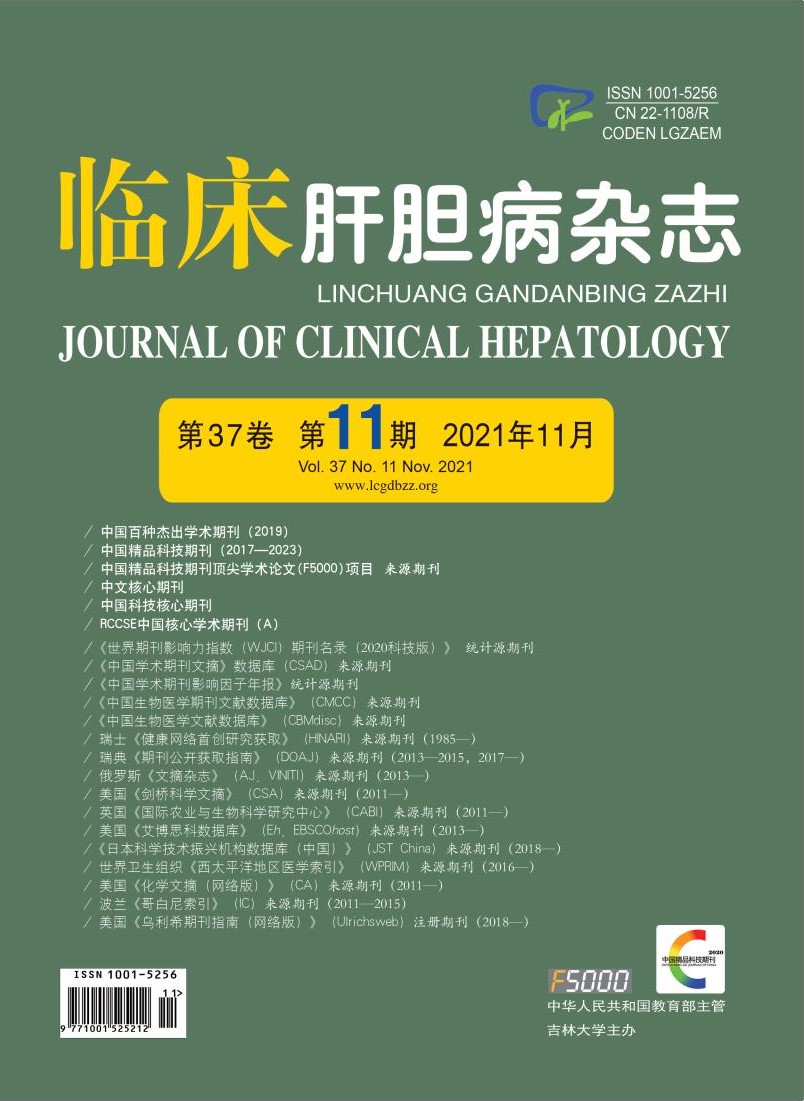| [1] |
MA MX, JAYASEKERAN V, CHONG AK. Benign biliary strictures: Prevalence, impact, and management strategies[J]. Clin Exp Gastroenterol, 2019, 12: 83-92. DOI: 10.2147/CEG.S165016. |
| [2] |
BOWLUS CL, OLSON KA, GERSHWIN ME. Evaluation of indeterminate biliary strictures[J]. Nat Rev Gastroenterol Hepatol, 2017, 14(12): 749. DOI: 10.1038/nrgastro.2017.154. |
| [3] |
KAPOOR BS, MAURI G, LORENZ JM. Management of biliary strictures: State-of-the-art review[J]. Radiology, 2018, 289(3): 590-603. DOI: 10.1148/radiol.2018172424. |
| [4] |
|
| [5] |
XIE C, ALOREIDI K, PATEL B, et al. Indeterminate biliary strictures: A simplified approach[J]. Expert Rev Gastroenterol Hepatol, 2018, 12(2): 189-199. DOI: 10.1080/17474124.2018.1391090. |
| [6] |
KWEE RM, KWEE TC. Imaging in local staging of gastric cancer: A systematic review[J]. J Clin Oncol, 2007, 25(15): 2107-2116. DOI: 10.1200/JCO.2006.09.5224. |
| [7] |
NOVIKOV A, KOWALSKI TE, LOREN DE. Practical management of indeterminate biliary strictures[J]. Gastrointest Endosc Clin N Am, 2019, 29(2): 205-214. DOI: 10.1016/j.giec.2018.12.003. |
| [8] |
NAKAI Y, ISAYAMA H, WANG HP, et al. International consensus statements for endoscopic management of distal biliary stricture[J]. J Gastroenterol Hepatol, 2020, 35(6): 967-979. DOI: 10.1111/jgh.14955. |
| [9] |
SADEGHI A, MOHAMADNEJAD M, ISLAMI F, et al. Diagnostic yield of EUS-guided FNA for malignant biliary stricture: A systematic review and meta-analysis[J]. Gastrointest Endosc, 2016, 83(2): 290-298. e1. DOI: 10.1016/j.gie.2015.09.024. |
| [10] |
HU B, SUN B, CAI Q, et al. Asia-Pacific consensus guidelines for endoscopic management of benign biliary strictures[J]. Gastrointest Endosc, 2017, 86(1): 44-58. DOI: 10.1016/j.gie.2017.02.031. |
| [11] |
KIM JY, LEE JM, HAN JK, et al. Contrast-enhanced MRI combined with MR cholangiopancreatography for the evaluation of patients with biliary strictures: Differentiation of malignant from benign bile duct strictures[J]. J Magn Reson Imaging, 2007, 26(2): 304-312. DOI: 10.1002/jmri.20973. |
| [12] |
YOO RE, LEE JM, YOON JH, et al. Differential diagnosis of benign and malignant distal biliary strictures: Value of adding diffusion-weighted imaging to conventional magnetic resonance cholangiopancreatography[J]. J Magn Reson Imaging, 2014, 39(6): 1509-1517. DOI: 10.1002/jmri.24304. |
| [13] |
DOMAGK D, WESSLING J, REIMER P, et al. Endoscopic retrograde cholangiopancreatography, intraductal ultrasonography, and magnetic resonance cholangiopancreatography in bile duct strictures: A prospective comparison of imaging diagnostics with histopathological correlation[J]. Am J Gastroenterol, 2004, 99(9): 1684-1689. DOI: 10.1111/j.1572-0241.2004.30347.x. |
| [14] |
KHASHAB MA, FOCKENS P, AL-HADDAD MA. Utility of EUS in patients with indeterminate biliary strictures and suspected extrahepatic cholangiocarcinoma (with videos)[J]. Gastrointest Endosc, 2012, 76(5): 1024-1033. DOI: 10.1016/j.gie.2012.04.451. |
| [15] |
CONWAY JD, MISHRA G. The role of endoscopic ultrasound in biliary strictures[J]. Curr Gastroenterol Rep, 2008, 10(2): 157-162. DOI: 10.1007/s11894-008-0037-4. |
| [16] |
American Society for Gastrointestinal Endoscopy (ASGE) Standards of Practice Committee, ANDERSON MA, APPALANENI V, et al. The role of endoscopy in the evaluation and treatment of patients with biliary neoplasia[J]. Gastrointest Endosc, 2013, 77(2): 167-174. DOI: 10.1016/j.gie.2012.09.029. |
| [17] |
OHSHIMA Y, YASUDA I, KAWAKAMI H, et al. EUS-FNA for suspected malignant biliary strictures after negative endoscopic transpapillary brush cytology and forceps biopsy[J]. J Gastroenterol, 2011, 46(7): 921-928. DOI: 10.1007/s00535-011-0404-z. |
| [18] |
SADEGHI A, MOHAMADNEJAD M, ISLAMI F, et al. Diagnostic yield of EUS-guided FNA for malignant biliary stricture: A systematic review and meta-analysis[J]. Gastrointest Endosc, 2016, 83(2): 290-298. e1. DOI: 10.1016/j.gie.2015.09.024. |
| [19] |
de MOURA D, MOURA E, BERNARDO WM, et al. Endoscopic retrograde cholangiopancreatography versus endoscopic ultrasound for tissue diagnosis of malignant biliary stricture: Systematic review and meta-analysis[J]. Endosc Ultrasound, 2018, 7(1): 10-19. DOI: 10.4103/2303-9027.193597. |
| [20] |
MOURA D, de MOURA E, MATUGUMA SE, et al. EUS-FNA versus ERCP for tissue diagnosis of suspect malignant biliary strictures: A prospective comparative study[J]. Endosc Int Open, 2018, 6(6): E769-E777. DOI: 10.1055/s-0043-123186. |
| [21] |
CHIANG A, THERIAULT M, SALIM M, et al. The incremental benefit of EUS for the identification of malignancy in indeterminate extrahepatic biliary strictures: A systematic review and meta-analysis[J]. Endosc Ultrasound, 2019, 8(5): 310-317. DOI: 10.4103/eus.eus_24_19. |
| [22] |
TOPAZIAN M. Endoscopic ultrasonography in the evaluation of indeterminate biliary strictures[J]. Clin Endosc, 2012, 45(3): 328-330. DOI: 10.5946/ce.2012.45.3.328. |
| [23] |
LEE JH, SALEM R, ASLANIAN H, et al. Endoscopic ultrasound and fine-needle aspiration of unexplained bile duct strictures[J]. Am J Gastroenterol, 2004, 99(6): 1069-1073. DOI: 10.1111/j.1572-0241.2004.30223.x. |
| [24] |
de OLIVEIRA P, de MOURA D, RIBEIRO IB, et al. Efficacy of digital single-operator cholangioscopy in the visual interpretation of indeterminate biliary strictures: A systematic review and meta-analysis[J]. Surg Endosc, 2020, 34(8): 3321-3329. DOI: 10.1007/s00464-020-07583-8. |
| [25] |
KORRAPATI P, CIOLINO J, WANI S, et al. The efficacy of peroral cholangioscopy for difficult bile duct stones and indeterminate strictures: A systematic review and meta-analysis[J]. Endosc Int Open, 2016, 4(3): E263-275. DOI: 10.1055/s-0042-100194. |
| [26] |
NISHIKAWA T, TSUYUGUCHI T, SAKAI Y, et al. Comparison of the diagnostic accuracy of peroral video-cholangioscopic visual findings and cholangioscopy-guided forceps biopsy findings for indeterminate biliary lesions: A prospective study[J]. Gastrointest Endosc, 2013, 77(2): 219-226. DOI: 10.1016/j.gie.2012.10.011. |
| [27] |
MCMAHON CJ. The relative roles of magnetic resonance cholangiopancreatography (MRCP) and endoscopic ultrasound in diagnosis of malignant common bile duct strictures: A critically appraised topic[J]. Abdom Imaging, 2008, 33(1): 10-13. DOI: 10.1007/s00261-007-9305-2. |
| [28] |
NGUYEN NQ, SCHOEMAN MN, RUSZKIEWICZ A. Clinical utility of EUS before cholangioscopy in the evaluation of difficult biliary strictures[J]. Gastrointest Endosc, 2013, 78(6): 868-874. DOI: 10.1016/j.gie.2013.05.020. |







 DownLoad:
DownLoad: